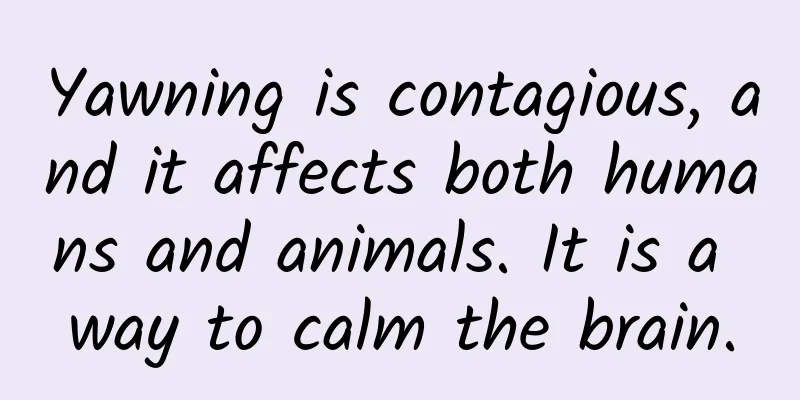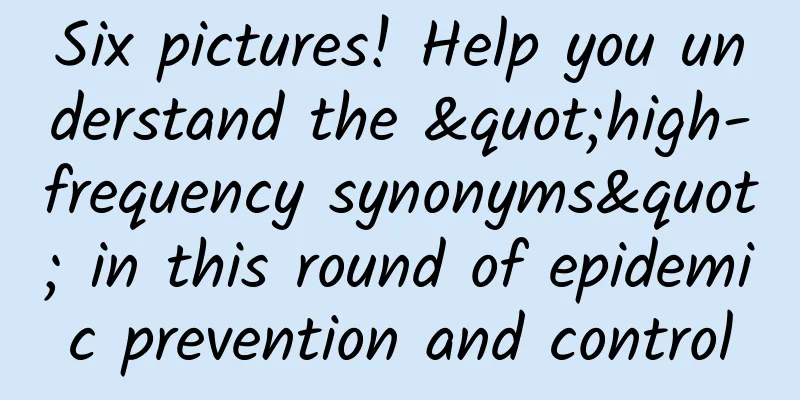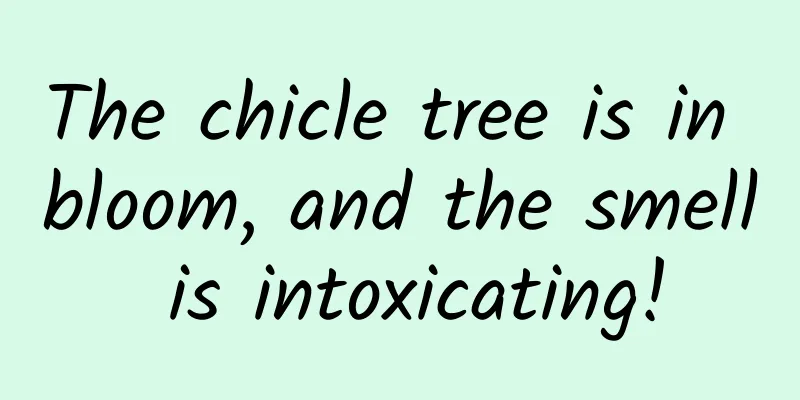Yawning is contagious, and it affects both humans and animals. It is a way to calm the brain.

|
Written by | Skin Proximity Did you yawn when you saw the picture above? Yawning is contagious. This is a law that people have discovered a long time ago. In 1508, someone proposed the theory that "yawning is contagious", and it has been studied for hundreds of years since then. Why do we yawn? Why is yawning contagious? Never mind, just yawn first...|Pixabay Scientists also discovered during the research process that this phenomenon is not unique to humans, but also occurs in unborn fetuses. Chimpanzees, cats, dogs, and elephants in the animal kingdom all have the phenomenon of contagious yawning. In one study, when participants yawned in front of dogs, 72% of the dogs started yawning as well . Other animals have also shown yawn contagion in other studies, such as chimpanzees, sheep, cats, and even elephants, parrots, or reptiles . And in addition to contagion between the same species, there are also such reactions between different species. Just like you want to yawn when you see a cat yawning, a cat may yawn when it sees you. They are all contagious! | Giphy However, as to why yawning is contagious, scientists have yet to get an accurate answer. To clarify this question, we need to start with "why we yawn". When we yawn, we usually open our mouths and take a deep breath, then exhale. Some people have proposed that yawning is actually a cooling mechanism for the brain. They say that before yawning, the brain's operating temperature is "too high", so it cools down through gas heat exchange. Yawning may be a way to cool your brain. | Pixabay To prove this point, researchers have come up with fancy experimental methods. For example, applying ice to the head and asking people to breathe through their noses can reduce the frequency of contagious yawning. Another example is wearing earplugs when yawning, so that you can hear the sound of gas exchange, etc. In short, scientists Guttmann and Dopart who support this theory believe that the brain may be cooled or the pressure may be changed through gas exchange. These studies have shown that the frequency of our yawning varies depending on the ambient temperature, body temperature, etc. However, this theory has also caused some discussion and controversy. People have other theories that yawning is actually a way for social animals to stay alert. Let's stay alert together! |Giphy When people yawn, they may be changing their state, awakening from sleepiness, or suddenly increasing their attention. Yawning may help us increase our alertness and face dangers in the environment in a better state. This theory can also explain why yawning is contagious among animals. Andrew Gallup, an evolutionary biologist who specializes in yawning, said that yawning can increase alertness, and watching others (other animals) yawn can also increase alertness. Contagious yawning can increase the alertness of the entire group. Are you alert? | Giphy In one of his experiments, he asked participants to pick out images of snakes. He found that after seeing someone else yawn, participants' ability to identify and detect snake images increased rapidly. This means that after seeing someone yawn, we react faster to threats. It's time to go to bed. It's time to go to bed.|Giphy Of course, in addition to these theories, some animals yawn for a special purpose. For example, some penguin couples yawn with their mouths wide open, which is actually a courtship . And snakes that appear to yawn are probably just adjusting the position of their jaws. Some animals, such as guinea pigs, yawn just to show their fangs and show aggression. Surprisingly, some animals in water also yawn. But they can yawn without taking in water. We always think that yawning is to take a big breath of air, but when aquatic mammals that breathe with lungs, such as bottlenose dolphins, yawn, they don't breathe, they just open their mouths wide. This discovery overturned our original definition of yawning. Others have found that unborn babies in amniotic fluid can also yawn. So how much do we still not know about yawning? Another interesting thing is that yawn expert Andrew Gallup mentioned that when he was studying yawning, he yawned all the time while reading literature, taking notes, and writing papers. Who wouldn't yawn? | Editorial Department Star Cat No. 1 So how many yawns did you yawn while reading this article? Let's yawn hard and welcome the beautiful morning! | Editorial Star Cat No. 2 References [1] Gallup, AC, & Gallup Jr, GG (2007). Yawning as a brain cooling mechanism: nasal breathing and forehead cooling diminish the incidence of contagious yawning. Evolutionary Psychology, 5(1), 147470490700500109. [2] Joly-Mascheroni, RM, Senju, A., & Shepherd, AJ (2008). Dogs catch human yawns. Biology Letters, 4(5), 446-448. [3] Madsen, EA, Persson, T., Sayehli, S., Lenninger, S., & Sonesson, G. (2013). Chimpanzees show a developmental increase in susceptibility to contagious yawning: a test of the effect of ontogeny and emotional closeness on yawn contagion. PloS one, 8(10), e76266. [4] Rossman, Zoë T., et al. "When yawning occurs in elephants." Frontiers in veterinary science 4 (2017): 22. [5] Yonezawa, Tomohiro, et al. "Presence of contagious yawning in sheep." Animal Science Journal 88.1 (2017): 195-200. [6] Van Berlo, Evy, et al. "Experimental evidence for yawn contagion in orangutans (Pongo pygmaeus)." Scientific reports 10.1 (2020): 1-11. [7] Massen, Jorg JM, et al. "A thermal window for yawning in humans: yawning as a brain cooling mechanism." Physiology & behavior 130 (2014): 145-148. [8] Enokizu, Akiko, et al. "Yawn-like behavior in captive common bottlenose dolphins (Tursiops truncatus)." Behavioral Processes 189 (2021): 104444. [9] Gallup, Andrew C. "The causes and consequences of yawning in animal groups." Animal Behavior 187 (2022): 209-219. This article is authorized to be reproduced from the WeChat public account "Bring Science Home". |
>>: When we venture into a black hole, what kind of magical space-time structure can we see?
Recommend
Love life and prevent suicide, what can we do?
Follow "Body Code Decoding Bureau" (pub...
"Tao Yuanming" Carnival - In-depth look at the key indicators of the brand sponsors of "Produce 101"
"Produce 101" has become popular, and i...
Apple chooses BOE as the winner, China's display industry may leap to the top ranks due to iPhone
BOE will miss out on the iPhone once again - but ...
Bacteria test: How many bacteria are there on a mobile phone that is used for 8 hours a day?
The third wave of free total colony count testing...
A cluster outbreak occurred among bus crew members! Will there be a large-scale COVID-19 outbreak in Beijing?
From 15:00 on May 12 to 15:00 on May 13, Beijing ...
Case analysis: How to conduct operational data analysis
The article mainly outlines the methods and proce...
The tenth episode of the Aiti Tribe Clinic: How to learn Python? The method is very important
【51CTO.com original article】 Activity description...
Human research on genetics began with the pea in your bowl
If you ask me which name I am most familiar with ...
4 marketing details to make your APP stand out
Since I represented "Zhimeng Mobile" to...
Will OPPO and vivo, which have invested in chip companies, get involved in independent mobile phone chips?
Driven by industry giants such as Huawei, Samsung...
Why do I always have two annoying bulges on my knees? Can I straighten them?
Every time I see a female star's legs, I envy...
When swimming, never wear white and blue swimsuits, it is really dangerous!
Summer is here, and many people may be eager to j...
The only blue-blooded creature on Earth! It once saved countless lives, but is now on the verge of extinction | World Horseshoe Crab Day
In 2019, the World Conservation Union classified ...
3 key points to capture "effective" traffic! ! A must-read for copywriters!
Most employers have a misunderstanding about new ...
As fruits become sweeter, are they still the “spokespersons” of health?
Review expert: Li Guangwang, Director of the Natu...









